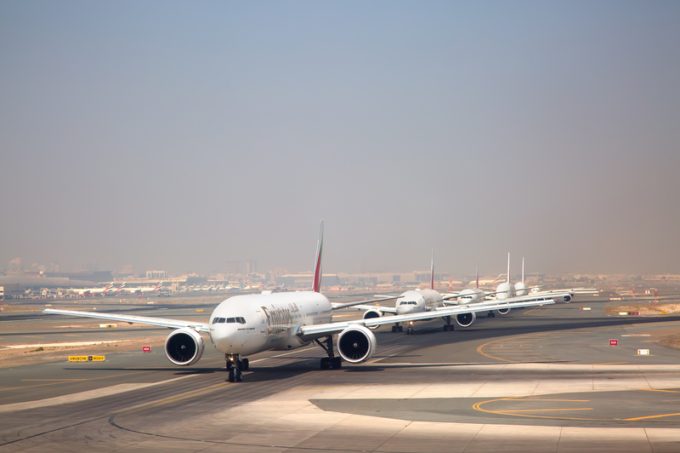With almost all box ships arriving late, Singapore acts to reduce time in port
Singapore’s transport minister said in parliament yesterday that the Maritime and Port Authority of Singapore ...
TFII: SOLID AS USUALMAERSK: WEAKENINGF: FALLING OFF A CLIFFAAPL: 'BOTTLENECK IN MAINLAND CHINA'AAPL: CHINA TRENDSDHL: GROWTH CAPEXR: ANOTHER SOLID DELIVERYMFT: HERE COMES THE FALLDSV: LOOK AT SCHENKER PERFORMANCEUPS: A WAVE OF DOWNGRADES DSV: BARGAIN BINKNX: EARNINGS OUTODFL: RISING AND FALLING AND THEN RISING
TFII: SOLID AS USUALMAERSK: WEAKENINGF: FALLING OFF A CLIFFAAPL: 'BOTTLENECK IN MAINLAND CHINA'AAPL: CHINA TRENDSDHL: GROWTH CAPEXR: ANOTHER SOLID DELIVERYMFT: HERE COMES THE FALLDSV: LOOK AT SCHENKER PERFORMANCEUPS: A WAVE OF DOWNGRADES DSV: BARGAIN BINKNX: EARNINGS OUTODFL: RISING AND FALLING AND THEN RISING

Sea-air is “barely viable” for shippers looking for a shortcut amid Red Sea diversions, as congestion at key transshipment points has increased lead times.
Director and founder of Aeromar sea air, Nick Coverdale, told The Loadstar: “There is congestion at the ocean transit points Port Klang and Singapore, and congestion at Jebel Ali is up to seven days from arrival of vessel to berthing. Then, if you’re not using Emirates, there is a continuous disaster at Freight gate 5 in Dubai International Airport.
“Due to all this, sea-air is barely a viable product,” he added.
Freight gate 5 is operated by Dnata and has in the past become congested. Dnata, however, told The Loadstar: “We can confirm that each dnata cargo facility at Dubai International airport is operating normally with no congestion.”
Indeed, transshipment-focused Jebel Ali is one of the main hubs for sea-air, which has been increasingly popular with shippers looking to avoid extra transit times round the Cape of Good Hope (CGH).
Xeneta told The Loadstar: “This port is very congested as a result of an increase in vessel traffic redirected away from the Red Sea.
“The seven-day average vessel waiting time is around three days. All terminals have high yard density, reducing productivity and increasing delays to inter-terminal transfers.”
Dammam, a transit port for cargo avoiding the Bab Al-Mandeb, is also congested due to an increase in vessel traffic redirected away from the Red Sea, warned Xeneta’s chief analyst, Peter Sand.
“The average vessel waiting time is the same as in Jebel Ali. All terminals have high yard density, reducing productivity and increasing delays to inter-terminal transfers – not surprisingly characteristics also put to the port of Jebel Ali.”
But while port congestion is increasing lead times for transshipment, Mr Sand told The Loadstar: “Using alternative routes to all-water round the CGH is always subject to consideration – there is not a smooth corridor found anywhere.”
However, he warned that all-water shipments come with “much extended transit times”.
If opting for a sea-air conversion, Flexport advised shippers to limit their shipment size to a maximum of 15 to 20cu meters per shipment to facilitate capacity access on the aircraft and limit risk of split arrivals.
“In particular, FCL to air conversions require a split,” the forwarder said.
Head of airfreight DACH and Italy at Flexport, Arno Hausch, explained: “When it comes to sea to air conversions, it’s very important to split the containers into four or five airfreight shipments, because it’s very hard to move a 60cu metre-shipment in a highly congested market on a timely uplift.”
However, Mr Coverdale told The Loadstar that this “makes no difference”.
“It’s nonsense,” he said.
Comment on this article